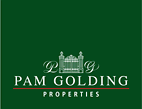A toast to the finest
2008-10-30
Malané Bosman
IT cost many a sleepless night before Roger Jorgenson’s creation was born. And then many more nightmares to have his brainchild registered, with “the big guns” blazing to keep him away from the promised land of cognac and honey. Now, with his investment in casks of oak, Roger has to sit it out while his wild filly mellows. The ten year wait makes cognac producing an expensive business. Connoisseurs appreciate that, and will happily hand over R499 to own a bottle of Roger’s Savingnac de Versailles. Many more nights of burning the midnight oil were to follow, tossing and turning and playing with words – until the label Savingnac de Versailles was finally born. According to Roger the name Savingnac denotes a brandy that is proudly South African, a product of the vine that is 100% pure and Guaranteed Naturally Aged in Cask. “I try very hard not to sell my cog-nac,” says Roger, Wellington farmer, winemaker and distiller of fine brandy. But connoisseurs are queueing for his limited edition ten-year-old brandy. There are only 340 individually numbered bottles from grapes that went to sleep in a single barrel in 1994. Lovers of the very special brandy agree, that after a decade “the fiery spirit has been tamed to amber perfection”. His 1998 Savingnac, made from Colombar, Chardonnay and Chenin Blanc wines, was double distilled in the same year. The spirit was then cask matured for five years to emerge smooth and subtle before taking its place in 370 specially monogrammed bottles. From the stoep of their homestead on Versailles, built in the late seventeenth century by its first Huguenot owner, Roger and Dawn Jorgenson look out over their vineyard on the banks of the Kromme River. It has long been their passion to perfect the ancient art of distillation brought to Wellington by the settlers from Cognac in France. Roger turned his hand to distillation in 1994, then as owner of Rustenburg farm in the Bovlei. He recites the history of the small stills found on nearly every grape farm in bygone years - how private distillery was outlawed and the distillers were driven underground, literally, as many buried their pot stills instead of destroying them. “It was too much effort for the government to collect customs from the many small distillers,” says Roger. “It was the time of the Nationalist Government, monopolies, the KWV and the Boards for everything. Private licences were revoked and the right to distill allowed only the KWV and the big guys. “For most, brandy then had the image of kuierdop. There was nothing for the connoisseur to relate to.” Early in the 1990’s Jorgenson, Sydney Back from Klapmuts and Achem von Arnim of Franschhoek claimed a constitutional right to distill. Heels were dragged in court corridors, so in January 1994 the pot kettle revolutionaries started distilling without permission. They were granted their licences the very next week, Roger recalls. He now concentrates only on the distillation of the five and ten-year-old Savingnacs while the 20-year-olds mature. He knew that starting from zero, pumping in a lot of capital and waiting for as long as it takes to build up stock, would not be easy on the pocket. “But time makes good brandy,” he says. “Each release is from a single cask and a single vintage. Each one is different, and each one is special. We have a very sexy product that can hold its own against the best in France.” The 100% pot still brandy has an alcohol content of 38%, with no caramel addition or colour correction. Like the farmers of old, they too use rainwater collected in the shadow of the Limietberg. Wellington can today toast its own brandy route, with the five estates - Versailles, Oude Wellington, Na- pier, Upland and De Compagnie - on board.
More
News
|


